15 Jan 2014
How Willing Are You To Recover From Addiction?
“Under the lash of alcoholism, we are driven to A.A., and there we discover the fatal nature of our situation. Then, and only then, do we become as open-minded to conviction and as willing to listen as the dying can be. We stand ready to anything which will lift the merciless obsession from us.” (A.A. Twelve Steps and Twelve Traditions, 24)
Are You Ready For Recovery?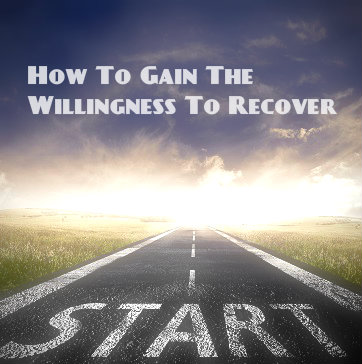
Life in recovery isn’t easy. It isn’t easy to figure out how to live without our highs. We don’t know if we can even imagine it—without them we feel raw, we feel unprotected. And then there is the sheer work of recovery. And it is work. We are expected to overhaul our lives, structuring our days around working the Steps, attending meetings, calling our sponsors and performing service. And this says nothing of the emotional work we know we’re in for. It’s painful, stressful and straining to have to face the worst parts of ourselves and our most tragic memories. Are you ready for that?
None of us are. We see the 12 Step Program before us and wonder how it would even be possible. How does anyone accomplish this? And why do they want to? Why does this seem like a better idea?
Where Do We Find Willingness To Recover From Addiction?
We are told that the only requirement for recovery is a willingness to stop doing what we’re doing. But how do we achieve this state of mind? How do we find that level of motivation? The willingness comes when we start to match up the reality of our lives in addiction with the prospect of our lives in recovery. Look honestly at the pain, the desperation, the fear, the self-loathing and the hopelessness. Is your addict life of sitting around all day getting high really the easier, more comfortable way?
We come to the point of realizing that as challenging as recovery might appear, it is something worth working toward and fighting for. Our addiction life wasn’t easier—lazier, maybe, but not easier. What we have before us is a solution, a life preserver. We have the opportunity to reach for it, and see what we’re made of, and what our Higher Power can do for us. Is it comfortable? No, but comfort doesn’t accomplish much. It’s time to get a little comfortable with being uncomfortable.
The Quest For Freedom From Addiction
We may not believe ourselves worthy or capable of great things. Understandable. But many of us can identify with the desire to be freed of pain. The addict life is killing us. If it hasn’t yet taken our bodies, it is certainly going hard after our souls. We must believe that there is something more. We may not be rich or famous, but perhaps we could be free.
This desire for freedom becomes the foundation of our willingness. We begin to see that we don’t, at this early stage, need to figure out how we are going to accomplish recovery. We see large groups of people doing this recovery thing and they don’t look that different from us. They’re not super humans or particularly special. They have stories that sound a lot like ours, actually. And they seem happy. Their eyes are clear and they’re talking about all of the miraculous changes they have experienced. They are saying, “just take this thing one day at a time.”
We don’t need to know how we will do it or how we will keep it going; we do need the willingness to say “yes” to recovery today. Are you willing?
If you’re ready, ready for a new life of freedom and sobriety, contact drugrehab.us today at 855-763-6488!
Read More About Former Addicts Becoming Advocates For Recovery
10 Jan 2014
Can Addicts Make The “Choice” To Stop Using?
“As active alcoholics, we lost our ability to choose whether we would drink. We were the victims of a compulsion which seemed to decree that we must go on with our own destruction.
Yet we finally did make the choices that brought about our recovery. We came to believe that alone we were powerless over alcohol. This was surely a choice, and a most difficult one. We came to believe that a Higher Power could restore us to sanity when we became willing to practice A.A.’s Twelve Steps.
In short we chose to ‘become willing,’ and no better choice did we ever make.” (Bill W., letter, 1966)
Have We As Addicts Lost The Power Of Choice?
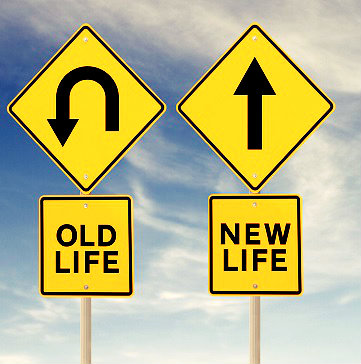 What we hear in recovery is that we have lost the power of choice with regards to our addiction. When we begin to use, we cannot stop. It isn’t that we don’t want to stop—many times we actually do want to stop very much. But we cannot. An obsession of the mind and a compulsion of the body crush any opposition we might muster.
What we hear in recovery is that we have lost the power of choice with regards to our addiction. When we begin to use, we cannot stop. It isn’t that we don’t want to stop—many times we actually do want to stop very much. But we cannot. An obsession of the mind and a compulsion of the body crush any opposition we might muster.
And then we hear about the choices we need to make to pursue recovery. But if we have lost the power of choice, how can we do anything besides surrender to the overwhelming power of addiction?
We cannot, when drinking or getting high, effectively choose to stop. But we can choose to become willing to get sober. We have seen that when alcohol, drugs or other addictions enter the picture, we lose our ability to say “no.” We can make a choice that this is a fight we’re no longer going to try to fight. We can decide to walk away altogether and never look back.
The Decision To End The Denial Of Addiction
The other choice we must make is to end our pattern of denial. How many years have we been saying there was no problem, really, or that we had this under control? Make the decision to begin looking at your life with a brutally bright light. Start to see that denial has been your defense and it’s killing you. It’s time to admit the truth. When you are ready to become honest, and to admit that you are indeed powerless, you open yourself to hope.
Stop Blaming Others For Your Addiction
As we sat languishing in our addictions we identified the people and the things we could blame for the state in which we found ourselves. It was our parents, our upbringing, our genetics, God, our bosses, spouses, kids, the government or some other institution. We thought ourselves justified: if “so and so” wasn’t the way he was or if this entity hadn’t done to us what it did, we wouldn’t be living this way. The next important choice we make is to stop blaming other people. Many people live hard lives, or have been the victims of injustice, or a bad childhood, and they aren’t drugging themselves to death. No one denies that perhaps life has dealt you a hard hand, but few will sympathize enough to say a drug addiction was a justified response. This is the path you have chosen, actually. And it is the path you can choose to get off of.
“We must never be blinded by the futile philosophy that we are just the hapless victims of our inheritance, of our life experience, and of our surroundings—that these are the sole forces that make our decisions for us. This is not the road to freedom. We have to believe that we can really choose.” (Bill W., Grapevine, Nov. 1960)
Read More About A Candid Story Of Surviving Addiction And Choosing Life In Recovery
17 Dec 2013
Promises Austin Luxury Rehab
Promises Austin is a luxury rehab center just outside Austin, Texas that treats men and women ages 26 and older who are looking for the most advanced and effective treatment available for addiction and co-occurring mental health disorders. We are able to provide extraordinary personal attention and a superior staff-to-client ratio because we treat a maximum of 24 clients at a time.
Located on a private, nine-acre estate nestled in the scenic Texas Hill Country, Promises Austin is a Joint Commission-accredited luxury rehab. Our programs are comprehensive, customized, evidence-based and effective, encompassing everything from medical detox to 35- and 60-day addiction treatment programs. We provide personalized treatment plans that are designed to address our clients’ physical, mental, emotional and spiritual needs.
At Promises Austin, we recognize that depression, anxiety, trauma and other mental health issues often accompany substance abuse. Our team of experienced counselors, a physician, and 24-hour nursing staff addresses these underlying issues during rehab.

Unique Addiction Treatment Programs
What can you expect during your stay at Promises Austin? Our approach includes more than a dozen holistic and traditional therapies merged into one luxury rehab experience. Our goal is to help you heal. Our addiction treatment programs offer a variety of therapies including:
- Acupuncture
- Aqua Therapy
- Drum Circles
- Eye Movement Desensitization and Reprocessing (EMDR)
- Integrative Breathwork
- Expressive Art Therapy
- Labyrinth
- Massage Therapy
- Medicine Wheel
- Personal Training
- Psychodrama
- Recreation Therapy
- Yoga
When you come to Promises Austin, you enter a luxury rehab center that is part of the Promises nationwide family of addiction treatment facilities. This means that each and every client receives Promises excellence – our promise to you.
After you leave Promises Austin, having completed your personalized addiction treatment program here in Texas, you’re not thrust out into the world with no resources. Our goal is to help you achieve lifelong sobriety. To that end, we provide one year of recovery coaching with your primary therapist so that clients who have completed the Promises Austin residential addiction treatment program may return for additional support as needed within the first year – at no cost.
Discover what it truly means to heal out here in Texas, call us today and begin your journey to recovery and freedom from addiction!
“Mother’s little helper” has been around for decades. In 1966, The Rolling Stones released a hit song about the abuse of drugs, like Valium, by mothers looking to take the edge off a busy day. Now, some moms are using different substances to get through the day: prescription stimulants. Although they can provide a boost of much-desired energy, many women develop a drug addiction to these commonly prescribed “legitimate” medications.
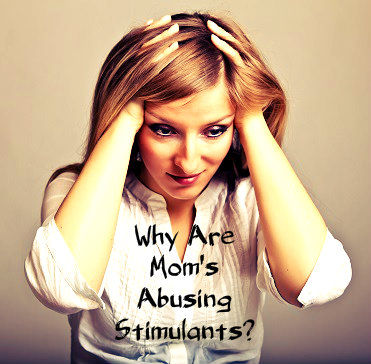 Prescription stimulants are normally used to treat a range of medical conditions, including attention-deficit hyperactivity disorder (ADHD), narcolepsy, and depression. Common stimulant medications include Dexedrine (dextroamphetamine), Adderall (amphetamine and dextroamphetamine), Ritalin (methylphenidate), and Concerta (methylphenidate).
Prescription stimulants are normally used to treat a range of medical conditions, including attention-deficit hyperactivity disorder (ADHD), narcolepsy, and depression. Common stimulant medications include Dexedrine (dextroamphetamine), Adderall (amphetamine and dextroamphetamine), Ritalin (methylphenidate), and Concerta (methylphenidate).
Legitimate Stimulant Use
Chemically, these drugs are similar to natural neurotransmitters within the brain, including norepinephrine and dopamine. When taken to treat a genuine medical condition, a physician will prescribe the medication at a low level and gradually increase it until the drug produces the desired effects. In addition, the stimulant typically comes in a capsule or tablet form that allows for the slow release of the medication into the body. This slow, steady rise in dopamine mimics the body’s natural production. When used as directed by a physician, ADHD medications and other prescription stimulants are not addictive and produce no high.
Stimulant Abuse And Emergency Room Visits
The effect is different when stimulants are abused, however. Instead of capsules or tablets generating a slow, steady rise of dopamine over time, the pills are crushed before being snorted or they are dissolved in water and then injected. This causes a dopamine rise so rapid that it disrupts the brain and produces feelings of euphoria.
Evidence suggests that drug addiction to stimulants is on the rise. For example, emergency room visits involving stimulant abuse skyrocketed between 2005 and 2010. Visits more than tripled for people over age 26 [1].
Why Mom’s Are Abusing Stimulants
The demands placed on mothers in this culture can feel overwhelming. From single moms to homeschooling moms to moms who work outside the home, many feel the pressure of being the master multitasker. Some mothers turn to stimulants in the belief they will help them focus better on their responsibilities or help them make it through a hectic day. It’s important to note that while these prescriptions can increase concentration in those with a medical need for them, there is no clinical evidence that abusing these drugs sharpens focus.
Women also frequently use stimulants to lose weight. For example, Adderall can speed up metabolism and lower appetite, resulting in weight loss. However, it’s not a healthy or permanent weight loss solution. When a woman stops taking the drug, she typically gains the weight back – and sometimes even more.
Dangers Of Stimulant Abuse
Abusing any drug can have a serious impact on a mother’s emotional and physical well-being; however, stimulant abuse is particularly dangerous. When abused, these medications can trigger irregular heartbeat, heart failure, seizures, and dangerously high body temperatures. As mentioned earlier, stimulants also cause decreased appetite, which, in serious cases, can cause malnutrition. In addition, women addicted to high doses often experience episodes of paranoia or hostility. Instead of helping a mother meet the demands of a busy lifestyle, stimulants make it harder to handle normal responsibilities, including caring for children.
There is also added danger in the method some addicts use to get high. When the drug is dissolved in water, some insoluble fillers in the pill may not break down completely. While these solid pieces are small enough to be injected, they are also large enough to block small blood vessels, creating the risk for serious health complications.
Stimulants are also dangerous because they don’t mix well with other substances. The ER study mentioned above showed that 63% of visits involving stimulants included the use of alcohol, painkillers, sleep aids, or anti-anxiety medications [1]. The use of other drugs adds an additional layer of risk to stimulant drug addiction.
Stimulant Drug Addiction Treatment
If you’re addicted to or abusing stimulant prescription drugs, you need drug rehab treatment. Addicts experience psychological withdrawal from chronic stimulant abuse, so the first step will likely be a medically-monitored detox to wean your body from the drugs.
After detoxification, therapy begins. There are several therapies used to treat this addiction, and your rehab team will recommend one or more based on your situation. Cognitive-behavioral therapy (CBT) is often used to examine the negative thoughts, beliefs, behaviors, and emotions that contribute to addiction. Once you better understand how those contribute to your drug addiction, you’ll learn how to positively change those thinking patterns in order to cope in a healthier way. Although considered a short-term type of therapy, CBT involves a gradual process that takes time and effort in order to be effective.
Contingency management is another treatment that may be used for abuse of Adderall and other prescription stimulants. Sometimes called voucher-based reinforcement (VBR), the program provides tangible rewards for positive behaviors and staying drug free. For example, an addict who stays clean for a specified period of time, as verified through urine samples, may earn a voucher for food, movie tickets, or other goods and services that promote drug-free behavior. The value of the voucher starts low and increases the longer the addict stays clean.
Studies of contingency management show that it can reduce stimulant abuse when used as part of a comprehensive treatment strategy [2]. Additionally, one study suggests that, on its own, contingency management may be more effective at treating stimulant use than CBT alone [3].
Treatment for stimulant drug addiction will also likely include support groups. Often based on the 12-step program first developed by Alcoholics Anonymous (AA), self-help groups provide guidance and assistance to recovering addicts. You’ll be able to connect with others going through the same struggles, which may help reduce feelings of hopelessness or isolation. Meetings are free, and you can attend them for as long as needed to help you stay abstinent.
Drug addiction in mothers can lead to serious consequences for herself and her children. Contact a drug rehab treatment facility about getting help for stimulant abuse or addiction. With treatment, it’s possible to stop abusing drugs and start learning healthier ways to live life, no matter how hectic your life may be.
References:
[1] http://www.samhsa.gov/newsroom/advisories/1301241230.aspx
[2] http://www.ncbi.nlm.nih.gov/pubmed/23138961
[3] http://www.ncbi.nlm.nih.gov/pubmed/16445555
13 Nov 2013
Why Is Drug Use Surging In Baby Boomers?
Statistics gathered by the Substance Abuse and Mental Health Services Administration, or SAMHSA, show a disturbing trend among older Americans. Members of the Baby Boom generation are using drugs and getting addicted to them in record numbers. Whether we can explain the trend or not, the fact remains that elder drug abuse presents some unique problems that require unique approaches for prevention and treatment.
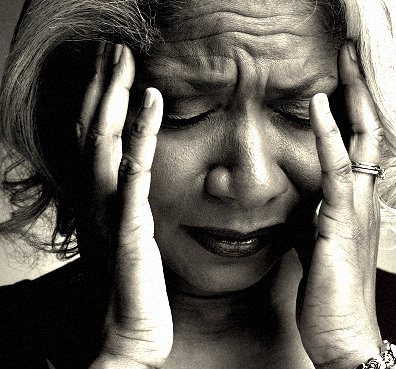 The statistics from SAMHSA show that among older Americans in recent years, marijuana use has increased five-fold, cocaine use has quadrupled, heroin abuse has doubled, and abuse of prescription drugs has more than quadrupled. The survey from SAMHSA also records treatment for drug abuse and addiction and found increases in the numbers of Boomers getting help for alcohol abuse in combination with cocaine use, and for abusing prescription painkillers. Emergency room visits for painkiller abuse and overdoses increased greatly over the last decade.
The statistics from SAMHSA show that among older Americans in recent years, marijuana use has increased five-fold, cocaine use has quadrupled, heroin abuse has doubled, and abuse of prescription drugs has more than quadrupled. The survey from SAMHSA also records treatment for drug abuse and addiction and found increases in the numbers of Boomers getting help for alcohol abuse in combination with cocaine use, and for abusing prescription painkillers. Emergency room visits for painkiller abuse and overdoses increased greatly over the last decade.
Explanations And Complications Of Drug Abuse In Older Americans
At first glance, the statistics surrounding the use and abuse of drugs in older Americans seems surprising. However, it is important to understand that we are discussing a generation of people who came of age in the 1960s, a time of experimentation and rebellion against authority. In tracking the drug and alcohol behaviors of this generation over the years, finding that they now, in their older years, are still using drugs is not a surprise. It only seems shocking when compared with the generations that came before them.
Unfortunately, drug abuse is even more of a problem for a person in his 50s and 60s than it was when he was in his 20s. As we age, our metabolism slows. For an older person abusing drugs or drinking too much alcohol, the time it takes to metabolize and get out of his system is much longer. An older person using may be intoxicated for longer and, therefore, at risk for more accidents and injuries.
Another issue is that drug users in their 50s or 60s are more likely to have health problems than they did in their younger years. Drug or alcohol abuse may exacerbate these problems, or even interact badly with prescribed medications. Furthermore, the symptoms of these other health conditions may mask the usual signs of drug abuse or addiction.
Signs Of Drug Abuse
Drug abuse and addiction are serious problems at any age, but in older Americans they present greater risks and complications. It is important to be aware of the possibility of drug use and to look out for signs in loved ones. Because another health problem may cause symptoms that mask the physical signs of drug abuse, watch for changes in behavior as the sign of a problem. Mood swings that are unexplained could be a sign of addiction, drinking or drug abuse. Changes in personality are also troubling. When someone just doesn’t seem like himself anymore, there could be a problem with drug abuse.
Prescription abuse is a growing problem among all age groups, so look for signs that your older friend or family member is abusing them. This could mean that he is requesting more refills for painkillers, seeing several doctors to get more prescriptions, going to more than one pharmacy or in other ways is trying to get more of his medications than has been prescribed.
Getting Help For A Loved One Abusing Drugs Or Alcohol
If anyone you love or care about is abusing drugs or alcohol, it is important to help him seek treatment; with an older person, it is especially imperative. Drug abuse can cause even more problems for someone who is older and should be stopped in its tracks. Having the courage to confront your parent, spouse, or other loved one about your suspicions could just save his life.
Confrontation is never easy so be prepared. Bring one or two other people along, friends or family members your loved one trusts. Be ready with solutions so that you are not simply accusing, but helping. Do your research ahead of time and find facilities for treatment that are prepared to work with older patients. As the problem of drug abuse continues to rise in the older demographic, more treatment centers are focusing on the age group. You should be able to find treatment plans that will suit the specific needs of your loved one and that will help him feel comfortable while getting well.
In order to fully and accurately evaluate the global impact of various diseases and harmful health conditions, researchers in the United States and Australia analyzed extensive medical data collected from more than 180 countries representing every geographical region on the planet. Working under the auspices of the 2010 Global Burden of Diseases, Injuries and Risk Factors Study, these investigators were able to compare and contrast a wide range of medical conditions, and after crunching all of the numbers, they discovered that mental health and substance use disorders are now the world’s leading cause of non-fatal disease.
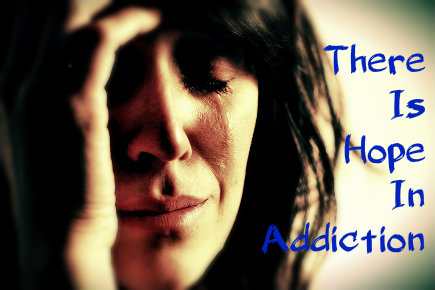 For the purposes of this study, 20 different conditions were categorized under the mental health and substance use disorder umbrella, including depression, drug and alcohol abuse, idiopathic intellectual disabilities, and all known anxiety, childhood behavior, and pervasive development disorders. A study such as this would have been difficult to perform in the past since legitimate statistics on mental health disorders were often sparse or non-existent, especially in the developing world, but, fortunately, global awareness about mental illness has grown to the point where these conditions are now being recognized and diagnosed everywhere with much greater accuracy.
For the purposes of this study, 20 different conditions were categorized under the mental health and substance use disorder umbrella, including depression, drug and alcohol abuse, idiopathic intellectual disabilities, and all known anxiety, childhood behavior, and pervasive development disorders. A study such as this would have been difficult to perform in the past since legitimate statistics on mental health disorders were often sparse or non-existent, especially in the developing world, but, fortunately, global awareness about mental illness has grown to the point where these conditions are now being recognized and diagnosed everywhere with much greater accuracy.
A Closer Look At Mental Health And Substance Abuse
In total, the conditions grouped together under the mental health and substance use disorder classification accounted for 22.8 percent of the global non-fatal disease burden, making them a greater factor for serious illness than such highly-publicized health problems as HIV/AIDS, diabetes and tuberculosis.
Breaking that 22.8 percent down into specific conditions, depressive disorders are easily the most common type of mental health problem experienced, accounting for 40.5 percent of all of the incidences reported. This means that depression alone is responsible for more than 10 percent of the global burden of non-lethal disease.
Next in line in frequency of diagnosis within the mental health/substance abuse group are:
- Drug and Alcohol Addiction (20.5 percent)
- Anxiety Disorders (14.6 percent)
- Schizophrenia (7.4 percent)
- Bipolar Disorder (7.0 percent)
- Pervasive Developmental Disorders (4.2 percent)
- Childhood Behavioral Disorders (3.4 percent)
- Eating Disorders (1.2 percent)
When the statistics for fatal and non-fatal illnesses are combined, mental health and substance use disorders are the fifth leading cause of death or serious disease across the globe. Naturally the incidence of specific mental conditions plus drug and alcohol addiction varies by geographical location, but there is no country or region of the world where common mental health problems and substance use issues are unheard of or insignificant in their levels of occurrence. The incidence of all mental health problems is higher in women and girls than in men and boys, but the inverse is true with respect to substance abuse.
Mental Health – Global Problems And Individual Solutions
While global statistics on mental health troubles and drug and alcohol addiction provide a useful overview of the situation, ultimately each individual nation-state will be forced to deal with the consequences of these conditions largely on its own. And unfortunately, in every single country, mental illness and substance abuse are placing significant financial and personnel burdens on health care systems that are already chronically undermanned and/or underfunded. In the developing world, shortages of trained medical professionals who are capable of providing effective and efficient mental treatment services are a constant problem, while in both developing and developed nation the high cost of treatment and rehabilitation often prevents suffering people from getting the attention and assistance they so desperately need. Complicating the picture further is that mental illness still too often goes undiagnosed, most frequently among the poor, and, in the case of substance abuse, even when individuals do manage to get treatment, the failure rate of this type of rehabilitation is discouragingly high.
In the past, mental illness carried a stigma that tended to prevent suffering people from coming forward and asking for help, or from admitting that they had a problem in the first place. Fortunately this situation has changed and changed dramatically, and that provides great reason for optimism and hope. Financial challenges that restrict the availability of quality mental health care for all are real and pervasive; however, as awareness of the depth of the problem of mental illness and substance abuse continues to spread, government agencies and public health officials in nations all across the planet will have little choice but to acknowledge reality and bring their funding priorities into line with the real needs of their citizens.
A recent study published in the journal Drug and Alcohol Dependence reports that the drug topiramate may help people battling cocaine addiction. More specifically, the study showed that people suffering from both cocaine and alcohol dependence may be more successful in treatment and use less cocaine if they are prescribed topiramate. These findings largely agree with previous, separate studies that also show topiramate’s potential usefulness for treating cocaine and alcohol addictions. However, this most recent study is the first to look at the drug’s effectiveness for people dealing with both dependencies at the same time.
What Is Topiramate?
Topiramate is an anticonvulsant drug that was discovered in 1979. It was approved by the Food and Drug Administration (FDA) in 1996 and has been primarily used to manage seizures in patients with epilepsy. Topiramate has also been frequently prescribed to prevent migraine headaches. In 2012, the FDA also approved topiramate for use as a weight-loss drug in combination with the drug phentermine.
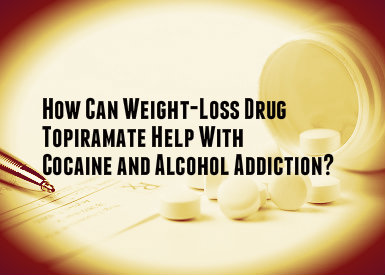 One of the effects of topiramate is an increase in the amount of gamma-Aminobutyric Acid, or GABA, in the brain. This substance is a neuro-inhibitor, and researchers now hope that using topiramate to increase GABA levels may help limit the dopamine release that happens when people take cocaine or drink alcohol. This would reduce the euphoric feelings that result from these substances, and make it easier for people to resist cravings and fight addiction.
One of the effects of topiramate is an increase in the amount of gamma-Aminobutyric Acid, or GABA, in the brain. This substance is a neuro-inhibitor, and researchers now hope that using topiramate to increase GABA levels may help limit the dopamine release that happens when people take cocaine or drink alcohol. This would reduce the euphoric feelings that result from these substances, and make it easier for people to resist cravings and fight addiction.
Details Of The New Study
Researchers in the psychiatry department of the Perelman School of Medicine at the University of Pennsylvania created and published the new topiramate study. These researchers were assisted by the Charles O’Brien Center for Addiction Treatment.
The study took place over 13 weeks, with the participation of 170 people who experienced both cocaine and alcohol dependence. The majority of the participants in the study were African-American males, and participants had an average age of 45.
Some of the patients were treated with topiramate, while others were given a placebo. The study employed a double-blind set-up, in which neither the patients nor the researchers knew who was taking the drug versus the placebo. This allowed researchers to examine the true effectiveness of the drug at reducing cravings, reducing overall consumption of cocaine and alcohol, and helping patients stay in treatment.
Mixed Results
At the conclusion of the study, researchers found both positive and neutral results for the effectiveness of topiramate. Patients who received the drug were more likely to remain in treatment and less likely to use cocaine during the last three weeks of the trial than those who received the placebo. Twenty percent of the participants on topiramate were able go without cocaine during the study, compared to only 7 percent of the participants on the placebo. Patients who had the worst withdrawal symptoms in the past seemed to benefit the most from topiramate.
However, the drug was not better than the placebo at reducing cocaine cravings. In addition, the drug did not help patients reduce their drinking even though they generally reported reduced alcohol cravings.
These results were somewhat surprising, since past studies have shown that topiramate did help people with alcohol dependence. The researchers in the Perelman School of Medicine have speculated that these poor results may reflect the low number of heavy drinkers who participated in the study. In past studies, the average number of days of heavy drinking among the study participants was much higher. It may be that topiramate is more effective for people who are very heavy drinkers.
What Is Next For Topiramate?
Although topiramate studies have been promising, additional research is needed to determine whether the drug can be a useful long-term tool for fighting cocaine and alcohol dependence. Researchers plan to perform more studies in order find out whether topiramate is effective when paired with additional drugs. By combining different drugs that have shown moderate success, researchers hope to produce even more impressive results for a greater percentage of patients.
Ultimately, larger scale studies will be necessary before the FDA can approve topiramate for additional treatment purposes.
Click Here – To Read More About Other Surprising Medications That Help Cocaine Addiction.
Four days after Lindsay Lohan was released for her latest effort at rehab, and just as her latest film, “The Canyons,” is airing on limited release, the 27-year-old starlet was invited to sit down with Oprah as part of OWN’s Oprah’s Next Chapter series. The Aug. 18, 2013, interview commences before an eight-part docu-series, airing in 2014, in which OWN will follow the actress’ life.
“The Canyons” is a provocative, independent Paul Schrader film—an edgy erotic thriller. While the film is receiving mixed criticism, its star actress is receiving excellent reviews for her role. IndieWire called “The Canyons” one of the “50 Indie Films We Want to See in 2013.” Lohan may be, as Oprah describes her in the interview, “both an adjective and a verb for child-star-gone-wrong” but it cannot be said that the famous young actress lacks talent.
Candid Lohan
What Oprah was hoping for, along with millions of viewers, was a new Lohan—an open and candid one. Dressed in a bright tangerine dress, slick ponytail, and with nude lips and smoky but subtle daytime eyes, Lindsay did not disappoint.
“I’m an addict,” the young actress said with no hesitation.
Multiple Addictions
She explained that her addiction is to alcohol, which had served as a gateway to other things, like cocaine. Lohan told Oprah that she’d used cocaine 10 to 15 times, always snorting it. In the past, she’d claimed to have used cocaine only a few times, but said she was scared then of admitting the truth and being judged. Lohan told Oprah that cocaine was not something she enjoyed—she always felt bad the next day—and that she’d used it because it allowed her to drink more, as well as the fact that, “It was a party thing. People would have it, and I’d do it.”

Courtesy of: http://www.nydailynews.com
On the prescription side, Lindsay admitted to having felt reliant on Adderall, and that giving it up might be her biggest challenge. She told the talk show host that she hadn’t used Adderall like many young women and celebrities do to keep weight down or as a stimulant, saying she could eat normally and sleep while using the prescription stimulant. She stated that she had been prescribed Adderall for ADHD and that it had helped her feel “grounded,” but that she is noticing how much calmer she feels without the drug. Lohan explained that she is now learning to feel grounded on her own for the first time, without the assistance of substances.
Fame and Partying at a Young Age
Oprah asked the actress about all the chaos in her life, starting with becoming a star at the age of 12 with the release of “The Parent Trap,” the remake of a 1961 Disney film about twins separated by their parents who find one another and conspire to bring their family back together. When “The Parent Trap” was released, Lohan became instantly famous, and only a handful of movies later, at just 19, she was making $7 million per picture. Paparazzi were following the starlet’s every move and tabloids were busy reporting her partying habits, alleging that her parents were exploiting the young star and even partying with her (even when she was still a minor), revealing her father’s financial misdeeds and habit of landing in jail, as well as her parents’ presumed struggles with addictions.
Crazy Family Events
Lohan told Oprah that no one had been there to guide her and that no one had truly stepped in to help her understand or manage so much money. But she doesn’t blame her parents, not even for the episode in which her father released a screaming telephone tirade between himself, Lindsay and her mother in which Lindsay accused her mother of using cocaine. About the event, Lindsay said she’d come home late from being up too long partying and was behaving in a way she later felt deeply ashamed of. The actress told Oprah that she had lied to her father about her mother using cocaine and had done it simply to hurt her mother.
Chaotic Way
Referring to these former chaotic events and Lohan’s own descriptions of her troubled past, Oprah asked if Lohan didn’t believe she may have been addicted to chaos. She agreed that she was. “I think so. Yeah, it was a comfortable choice to me. What was chaotic to other people on the outside looking in was normal. There is something to be said about me learning to be comfortable with things just being OK.”
Regarding the jail time the young actress was sentenced to for a DUI charge, Lohan admitted that subconsciously, she believes she wanted to go. What she’d needed then was peace from the chaos and ironically, a part of her believed being sent to jail might give her that. She said, “Having all the chaos around me that I was so comfortable with, I somewhere inside knew I wanted to go to jail. And I think that that was subconsciously being put out there just by my actions, or lack thereof.”
New Realization
Lohan’s latest stint in rehab occurred by court order, but she says this time was different, that she is different. Although the judge required that she go, she didn’t fight it like she had in the past. She explained to Oprah that those who worked at Betty Ford and Cliffside Malibu (she spent time in both) must know something she didn’t. She referenced Albert Einstein’s definition of insanity: “Doing the same thing over and over again and expecting different results.” Regarding the judge and the healthcare providers at Betty Ford and Cliffside Malibu, Lindsay said, “I probably need to shut up and listen. You probably do know what’s best because what I’ve been doing hasn’t worked for me in the past.”
During the interview, Lohan referenced her growing spirituality as a source of strength in her life and in her sobriety. She explained, as many recovering people do, that she has no control over the future; she can focus only on today. Regarding what she can try to do to stay well, she said remaining present, clear-headed and focused is most important. While Lohan represents that vanishingly rare breed of young, talented celebrity, privileged with fame and wealth at an early age, she is also perhaps an archetype, the shadow side of celebrity—what happens when beautiful young women are thrust into the spotlight without a hand to guide them or friends and mentors to truly trust. She has been in turn exploited and addicted, though it is too simplistic to say she is either a victim or a villain.
Comparison to Classics
While many consider her a Hollywood punch line, Lohan has the smoky voice and cool, sensual beauty of certain classic ladies of Tinseltown’s epic past. It would be easy for her world to burn up in a flashbulb second like the brilliant, beautiful lives of women who’ve come before her: Judy Garland, Marilyn Monroe, Lani O’Grady or any of the other talented women who died too soon. Although it is never easy to remain forever on the road to health and success, and rarely continuously achieved for recovering addicts, least of all for the newly recovering or for people whose lives are so closely watched and judged, we can hope for the best for this young star. She may have her best work still ahead of her.
The Next Chapter
About her “next chapter,” Lohan told Oprah, “[I’m ready] to get the thing that has made me happiest my whole life back, which is to work really hard, stay focused and prove myself. I have to regain trust in people, in my career, that had doubts, and I fully respect that on their behalf. As long as I stay honest in myself and do the work I’m willing to do and have been willing to do and am doing, then nothing can stand in my way. I am my own worst enemy, and I know that.”


